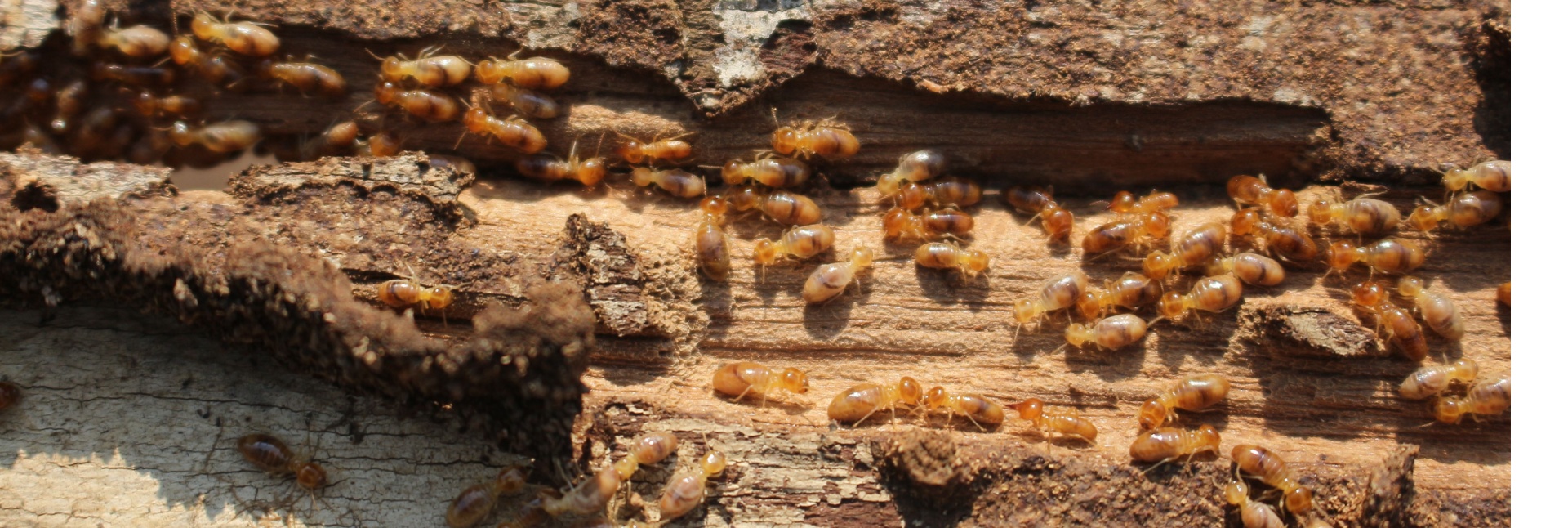How Do I Know If I Have a Termite Infestation in My Myrtle Beach Home?

Myrtle Beach’s warm, humid environment is perfect for beach days—and unfortunately, for termites too. These pests are experts at staying hidden while they chew through your home’s foundation. Spotting the signs early can help you avoid major damage and expensive repairs.
If you’re unsure what to look for, here are some of the most telling signs that termites may be active in your Myrtle Beach home:
Hollow-Sounding Wood
If you tap on wooden surfaces—like baseboards, door frames, or beams—and they sound hollow, termites may be tunneling inside. These pests consume wood from the inside out, leaving only a thin outer shell. This symptom is especially common in older Myrtle Beach homes with untreated wood.
This kind of damage often goes unnoticed until renovations or repairs begin. If you’re planning any home improvement projects, it’s wise to inspect exposed wood for signs of internal decay—especially in crawl spaces, attics, or areas with previous moisture issues.
Discarded Wings
Swarming termites shed their wings after finding a mate and establishing a new colony. These delicate, translucent wings often pile up near windowsills or doorways. If you spot them, it’s a strong indicator that termites are nearby and possibly already inside your home.
Swarming typically occurs in spring and early summer, especially after rain. Myrtle Beach’s coastal climate accelerates this process, making it important to stay alert during these months and inspect entry points regularly.
Mud Tubes
Subterranean termites build narrow mud tubes to travel between their underground nests and food sources. These tubes—often found along foundation walls or crawl spaces—help termites retain moisture and avoid exposure. Their presence is one of the clearest signs of active termite infestation in Myrtle Beach homes.
These tubes are often hidden behind landscaping, mulch, or siding, so a thorough inspection around the base of your home is essential. If you spot one, don’t break it—leave it intact for a professional to assess the activity level and colony size.
Frass (Termite Droppings)
Drywood termites leave behind frass, which looks like tiny wood-colored pellets. These droppings often resemble sawdust or coffee grounds and can be found beneath infested wood or scattered on floors. It’s a visible clue that termites are actively feeding inside your home.
Unlike other pests, termites push frass out of their tunnels to keep their galleries clean. If you notice small piles near wooden furniture, window frames, or baseboards, it’s a sign that the infestation may be more advanced than it appears.
Warped Doors and Windows
Moisture from termite activity can cause wood to swell, making doors and windows difficult to open or close. While this issue is often blamed on humidity—especially in coastal areas—it can also be a sign of hidden termite damage.
This symptom is particularly common in homes with older wooden frames or poor ventilation. If you’ve ruled out seasonal humidity and still struggle with sticking doors or windows, it’s worth investigating further for structural damage.
Cracked Paint or Bubbling Wallpaper
Termites tunneling behind walls can cause surface irregularities. Cracked paint, bubbling wallpaper, or distorted drywall may indicate that termites are active beneath the surface. These signs often appear in moisture-prone areas like bathrooms and kitchens.
These visual cues are often mistaken for water damage or settling issues. However, if they appear alongside other signs—like frass or hollow wood—it’s a strong indication that termites are active behind the scenes.
Faint Clicking Sounds
In quiet moments, you might hear soft clicking or rustling sounds coming from inside your walls. This noise is caused by soldier termites banging their heads to signal danger or workers chewing through wood. While subtle, it’s a powerful indicator of an active infestation.
This sound is most noticeable at night when the house is quiet. If you hear it consistently in the same area, it’s worth having a professional termite inspection to determine the source and extent of the activity.
Why Professional Termite Inspections Matter
Even if you’re confident in your ability to spot signs of termites, a professional inspection offers a level of precision and insight that DIY methods simply can’t match. Licensed pest control experts use specialized tools and techniques to detect hidden termite activity, assess structural vulnerabilities, and recommend targeted treatments. In Myrtle Beach, where termite pressure is high year-round, scheduling regular inspections is one of the smartest ways to protect your investment.
At Team Veterans Pest Control, our inspections are more than just a walkthrough—we apply detailed assessments and local expertise to every home we evaluate. Whether you’re buying a new property or maintaining your current one, our termite inspection services are designed to give you clarity and confidence.
Protect Your Home with Confidence
Termites are experts at staying hidden until the destruction is severe. A proactive approach—like scheduling a home pest inspection in Myrtle Beach—can save you thousands in repairs and protect your home’s value.
Team Veterans Pest Control offers expert termite control in South Carolina, with a focus on precision, consistency, and long-term results. Our team understands the unique pest pressures of coastal homes and delivers customized solutions that work.
Reach out today to schedule your termite inspection and get a solution tailored to your home’s unique needs.